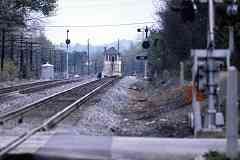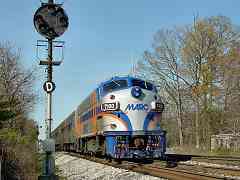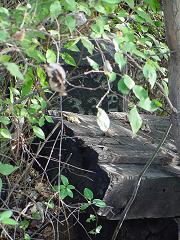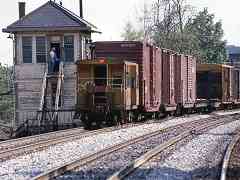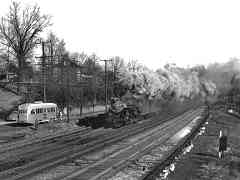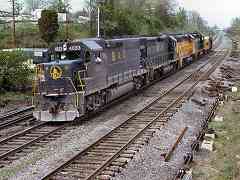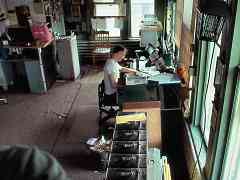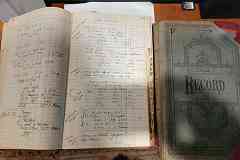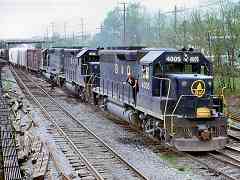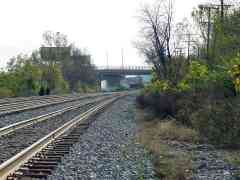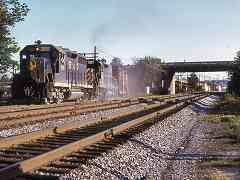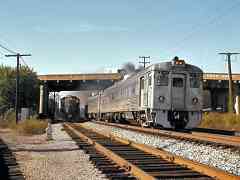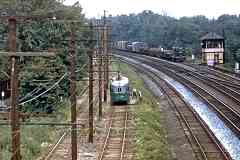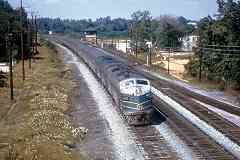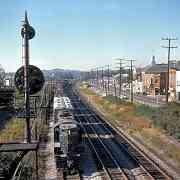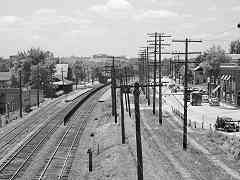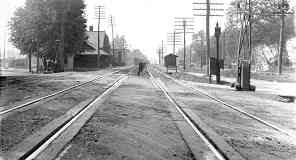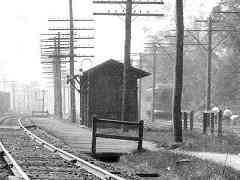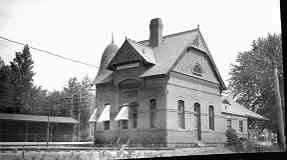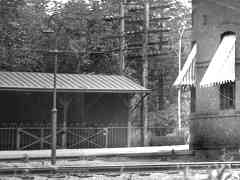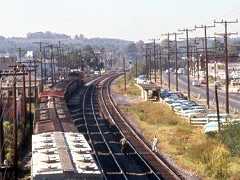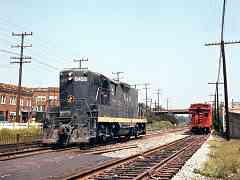|
JD Tower oversaw traffic to/from the busy Alexandria Branch that scoots
around downtown Washington. A B&O 1910 station list encodes it as JU Tower,
possibly representing Alexandria JUnction, the name by which the tower was
known when it opened during 1894. The basis for its renaming to JD has
been lost to time.
Tower operator George Laycock stands at the door. The building seen here,
located across the tracks from Jefferson Street, was the third tower at this
site. The first tower soon proved too small, and the second was damaged
beyond repair by a 1917 derailment.
Railroads placed a tower at junctions of multiple, significant rail lines.
Before onboard radios and trackside telephones, towers relayed dispatcher
instructions to train engineers. Tower operators would configure nearby
track switches (also called turnouts and points) to match the dispatcher's
train routing instructions.
Reader Russ Forte shared some memories:
When I was a kid, my dad took me to get my hair cut at a barber
school located in a building near the tracks. We used to walk down
to the tracks to look for trains. One day, the guys in the tower
invited us up to see the insides. I was a very impressed 12
year-old. They had a board on the wall and about 50 levers
that controlled the turnouts and signals. We didn't see any trains,
but they showed us how they changed the turnout settings by moving
the lever.
|
